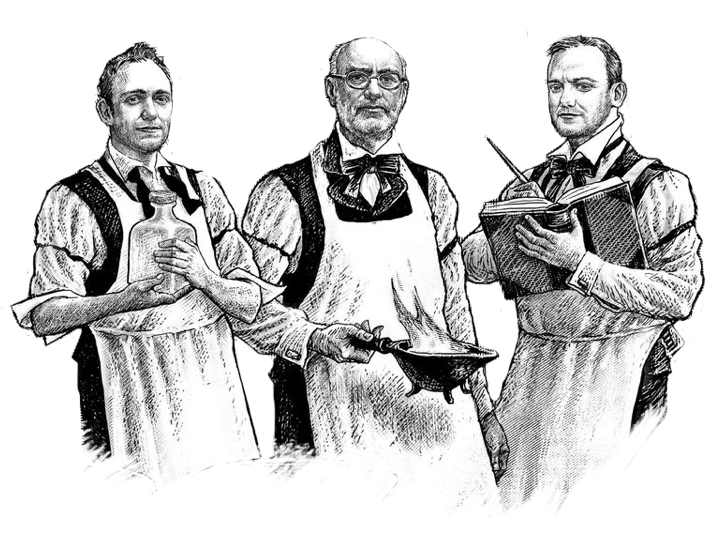
38,5%



history of the national Russian drink




History

ФАКТЫ
1515

The first written mention of distilled spirit «hot wine» in Russian is the letter of monk Iosif of Volotsk. It was a strict prohibition to bring the alcoholic drinks in the monastery.
1533

The first mention of vodka (bread wine distilled with herbs and spices) in Russian is the chronicle of treatment of the father of Ivan the Terrible, the Russian king Vassily III. Vodka was applied there by external use as an antiseptic, but he was still dead from the blood poisoning.
When rectifcation (distillation columns) reached Russia in 1870, alcohol started being produced using the more effcient modern technology and the old recipes of grain distillates used by the nobility were slowly phased out.

1870

1895
It was then in 1895, when the Tsar introduced a state monopoly, that the production of Polugar was completely forbidden and all the traditional distilleries with their copper pot stills were destroyed.
The vodka was made from grain and distilled in copper pot stills, rather like single malt whisky, and was called Breadwine or Polugar.


The word Polugar actually means half-burned in Russian.
This is because before alcohol meters were invented, the strength and therefore the perceived quality of an alcoholic drink would be tested by burning out two portions of the liquid until just one portion is left. In other words, when the drink was half burned off, it was called “Polugar.”



2010
This lost symbol of traditional Russian gastronomy has now started to make a comeback thanks to a recipe found in a book from the 18th century by Boris Rodionov, a well-known Russian vodka historian, academic and published author.
The Rodionov family are now spearheading a movement to restore the former glory of traditional grain distillates, Polugar, so enjoyed during the golden age of Russian history

2021
«Rodionov& Sons» made the comeback of Russain grain distillates in 2010

Future
THE LEGENDARY RUSSIAN BREADWINE

2010
1895
1870
1533
1515


